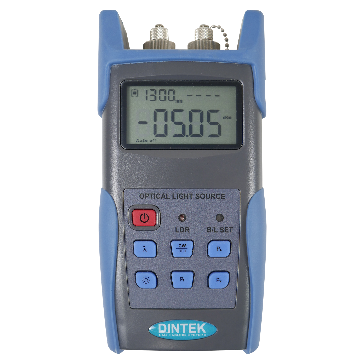Optical light source
Even with a fiber optic connection, it is important to know that it performs as optimally as possible. One indication of a quality connection is to measure the attenuation of the fiber optic cable.
All wearers experience some damping. A fiberglass is no different in this. DINTEK fiber optic cables are of the highest quality to minimize signal loss. In a fiber optic connection, welds and couplings provide the most attenuation. This attenuation is to be expected and factored in. But what if a weld is not quite right? Whether a clutch is dirty, causing higher than expected damping? Also, the sheath of the cable may be damaged or there may be an excessive angle in the cable resulting in signal loss.
Excessive attenuation comes at the expense of signal quality. Especially a fiber optic connection has high speed potential. If the attenuation is too high, it may be that precisely when taking advantage of the potential offered by fiber optics, expectations are not met.
To make sure the fiber optic cable is installed properly or to find out why the expected speed over a fiber optic is not being achieved, the attenuation on the connection can be checked. The expected attenuation of the cable is stated in the specifications of the cable. Attenuation of fiber optic connections is measured in dB/km. A DINTEK fiber optic cable has an attenuation of about 3 dB/km. With such low damping, measuring the damping on a joint comes very precisely.
The DINTEK optical light source can put an adjustable amount of signal on a fiber optic. On the other side, signal strength can be measured with the Optical Power meter. The measured signal strength gives a good indication of the quality of the connection. If attenuation is higher than expected, check that there are no excessively sharp bends in the cable and inspect and/or clean any couplings present. Should the attenuation also be higher than expected after this check, the link can be further analyzed by using an Optical Time Domain Reflectometer (OTDR).
Product number N6202-02001
Highlights
- Suitable for singlemode and multimode
- Tone generation, 270Hz, 330Hz, 1KHz, 2KHz
- Output power adjustable
- Low battery indication
